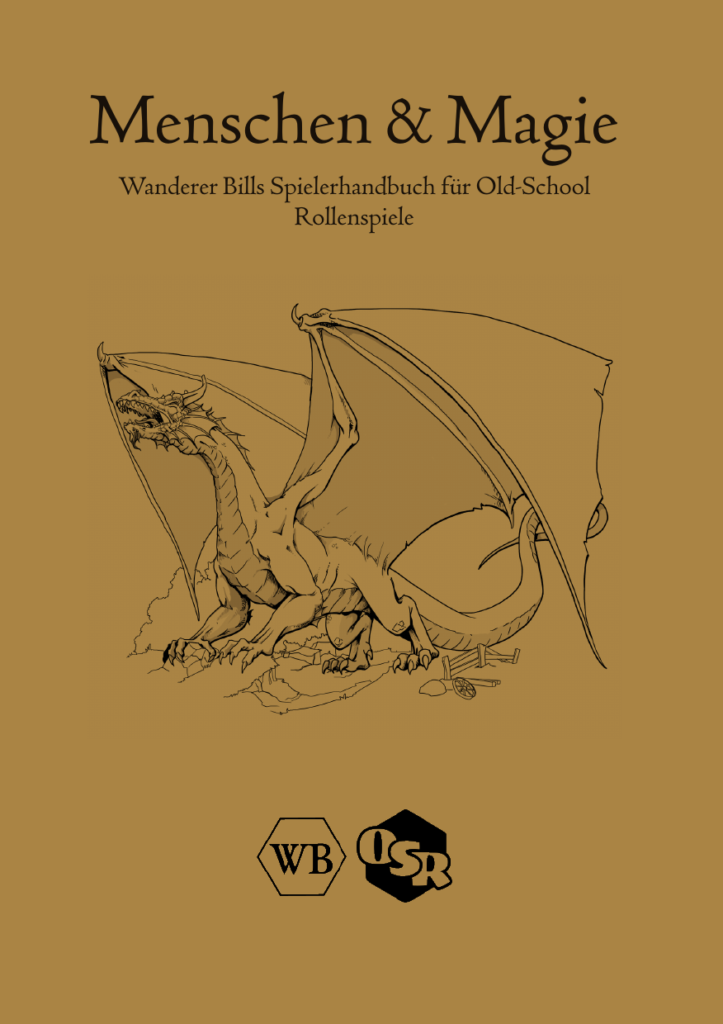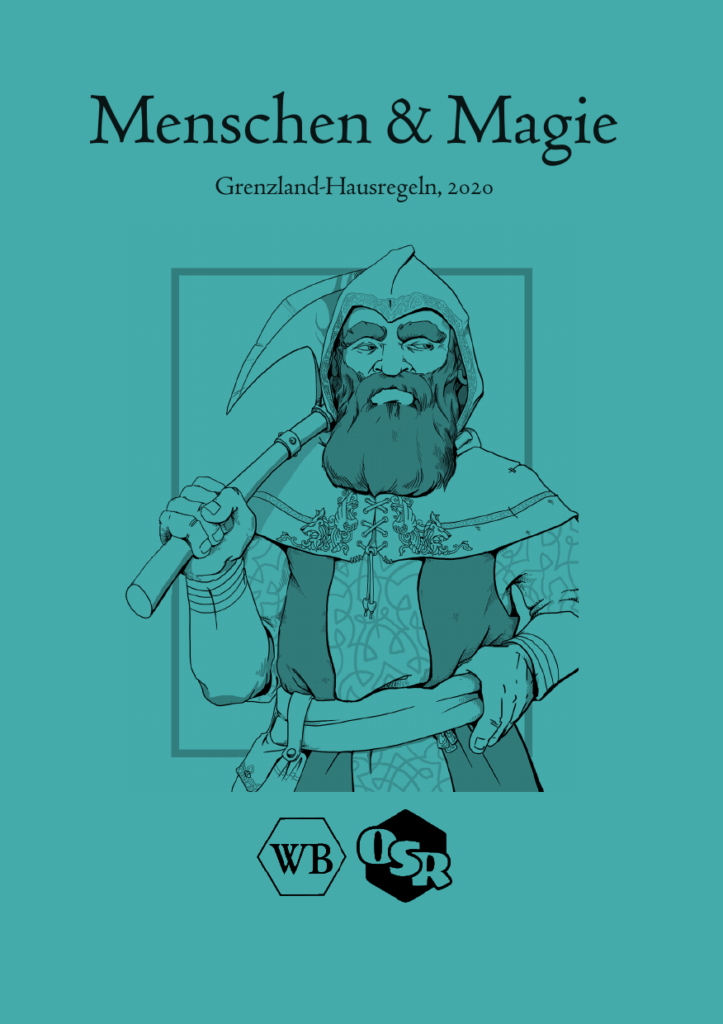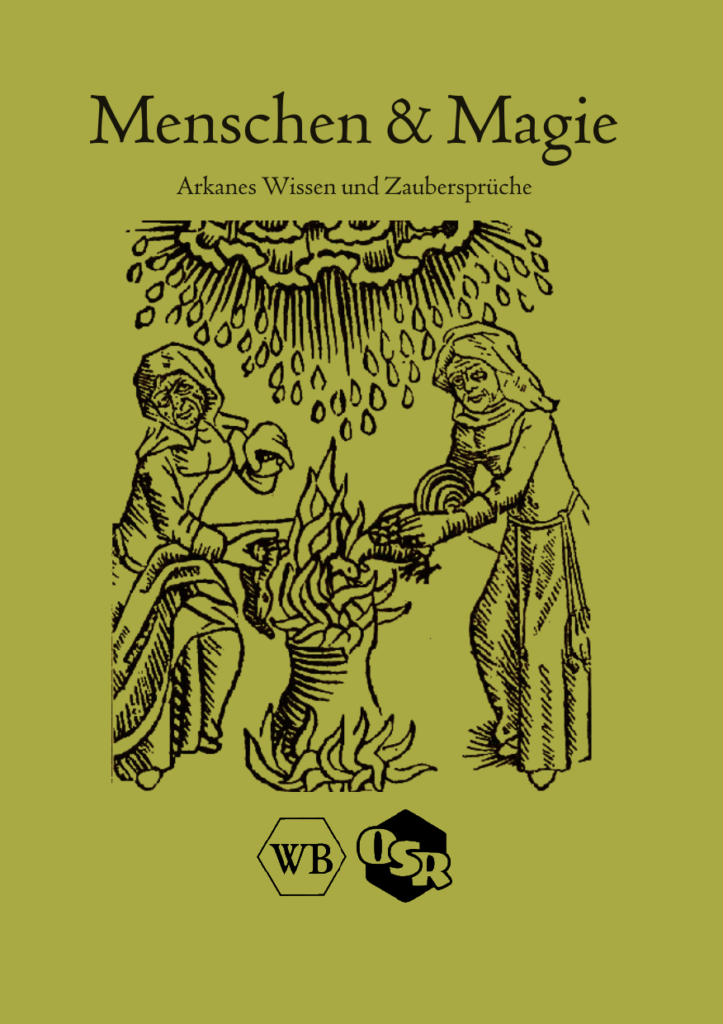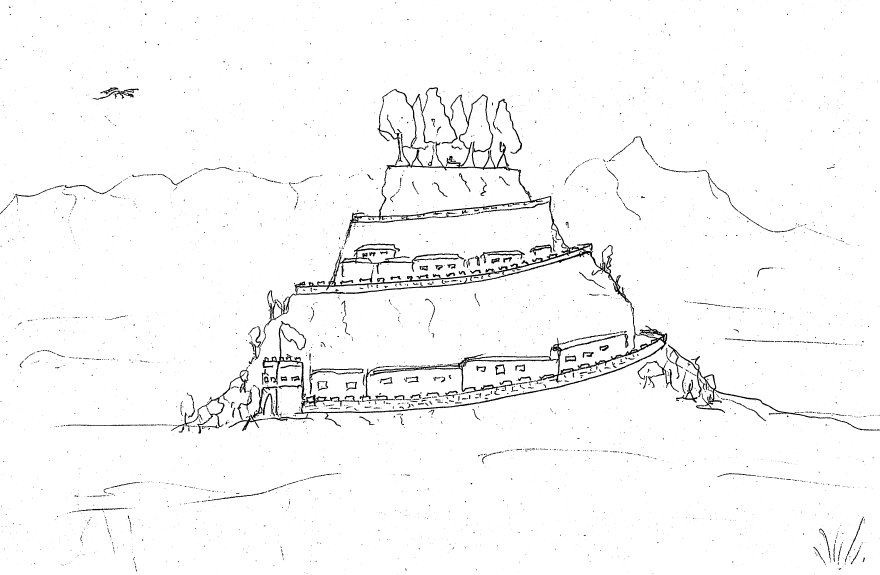In our games of Original D&D combat rounds usually follow a rather loose routine. Out of habit I usually begin combat time by asking to roll for initiative. Thinking about what I’ll describe in this post, I now believe, that this is a bad habit!
Order of actions should not only depend on random die rolls but just as well on tactical decisions made by the players. At any rate, the way things usually develop, actions are declared and rolled for as everyone sees fit. This tends toward being a hot mess, but most of the time combat gets dealt with quickly and entertainingly and usually without too much complication or the feeling of things being unfair.
Yesterdays game however offered a rather standard situation that illustrated, how an ordered combat round would have made quite a difference. The setup of the scene was like this:
Three player characters, lets call them Sander the Medium, John the Acolyte and Gregory the half-elven Veteran-Medium, walked down a winding path towards the infamous parish of Nulb, when they were waylaid by a bunch of bandits. A roll for surprise revealed that no side was surprised, the player characters noted some movement in the shrubs ahead and could discern the crooks ready to attack them. Another roll indicated a distance of some 50 yards. I narrated how three bandits got up and aimed with their bows (a long distance shot with a short bow as I realise now), and how another three bandits began charging at the PCs wielding spiked clubs.
Order of actions
Now I asked the players for actions, and to roll for initiative. The players of John and Gregory declared to ready their weapons and move for cover. The player of Sander declared to throw a sleep spell at the attackers, and since the group won the initiative I let him roll for numbers of hit dice affected right away. He rolled high, a 12 if I remember correctly, so no doubt he put all of the attacking bandits to sleep … at once … no bow shots, no clubbing … Combat had ended (for now) before it’d begun, with not much to do for the other two player combatants – a dull victory.
OD&D has no fixed rules on order of combat, but our house rules document does. With a nod to the Chainmail rules the order in a combat round is stated thus:
- Check for surprise
- Declare actions and spells
- Roll for initiative
- Movement and ranged attacks both sides (!) in initiative order.
- Spells take effect (!)
- Melee attacks both sides in initiative order
- Second ranged attacks for units/characters that did not move during the movement phase.
You will have noticed, that I had skipped the ranged attacks, before the sleep spell took effect. And clearly the scene might have developed quite differently, had I let the bandits loose their arrows just before the sleep spell put them to sleep. The odds for the player characters wouldn’t have been so bad, since a bow shot at Sander would have been at a -4 for distance, and the shots at the other two player characters would have been at a -6 for distance and cover. Still I believe the scene would have felt much more tense and uncertain if I had kept to the proper order. With a slim chance Sander might have been hit, while casting the spell, which would have negated its effect completely. Much more would have been at stake and the victory they achieved would have felt like much more of an accomplishment.
There is also a story telling aspect to this. Casting spells is never easy, it takes time and effort. Introducing a logical break between the declaration of casting a spell and having said spell take effect illustrates this.
Spell Casting in Combat
In order to add some interest and “save” the encounter, I whipped up two more bandits who’d sneaked around the PCs and where now charging in from their flanks. Gregory declared his own sleep spell, but was meleed by one of the bandits, so I ruled he lost his concentration on casting his spell. Sander got hit badly by the other bandit, lost all but one hit point, but could strike back with his staff, downing the bandit, which again caused the other bandit to loose his morale and flee.
Thinking about this I believe here is another mistake. Gregory shouldn’t have lost his sleep spell. He should have lost his concentration only if he’d got hit successfully by his opponent. But the opponent missed his attack roll. Again OD&D has no fixed rules on this, and the situation seemed to be logical. However the original Dungeon Masters Guide is quite explicit on this, and with good reason I think:
“Being struck by something during casting will spoil the spell”
and
“Any successful attack, or non-saved-against attack upon the spell caster interrupts the spell.”
In fact as I see it now, the first sleep spell should have been at stake to be spoiled by a bow shot, while the second should have taken effect as the spell caster was not hit while in melee.
Putting the two topics of this post together also hints at an important tactical option. Casters who notably begin casting spells should become preferred targets for ranged attacks, in order to prevent them from casting.
So here it is, two seemingly minor details which can add so much interest and tactical depth.
Note to self
- when declaring combat time, focus on proper order of actions!
- whenever an opponent starts to cast a spell, be sure to describe to the players how he does so!





